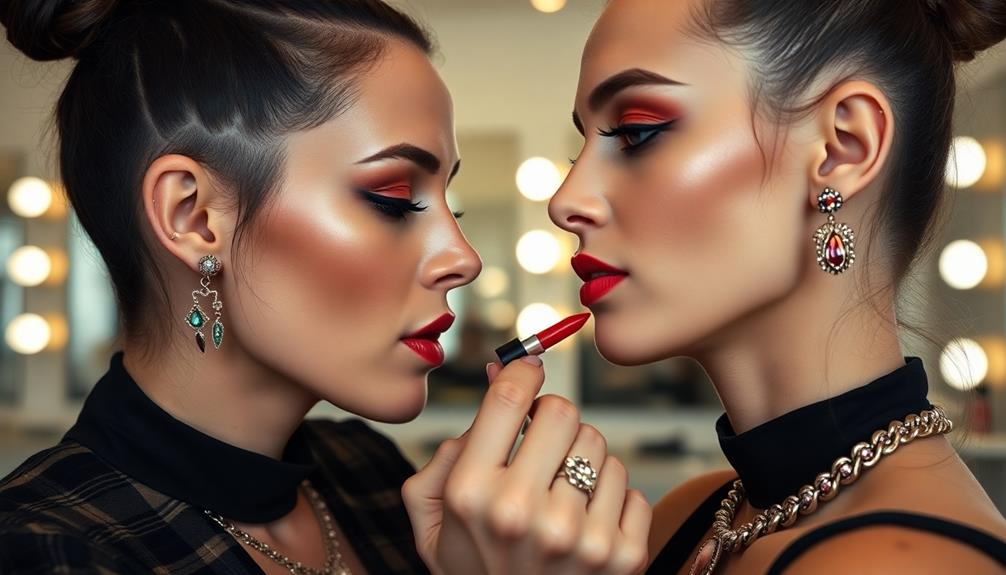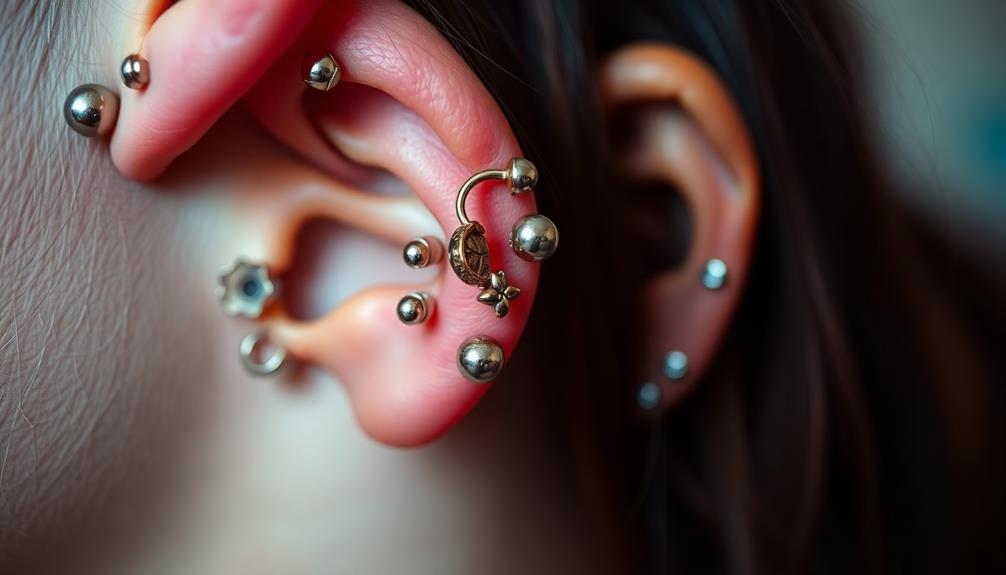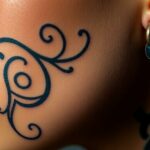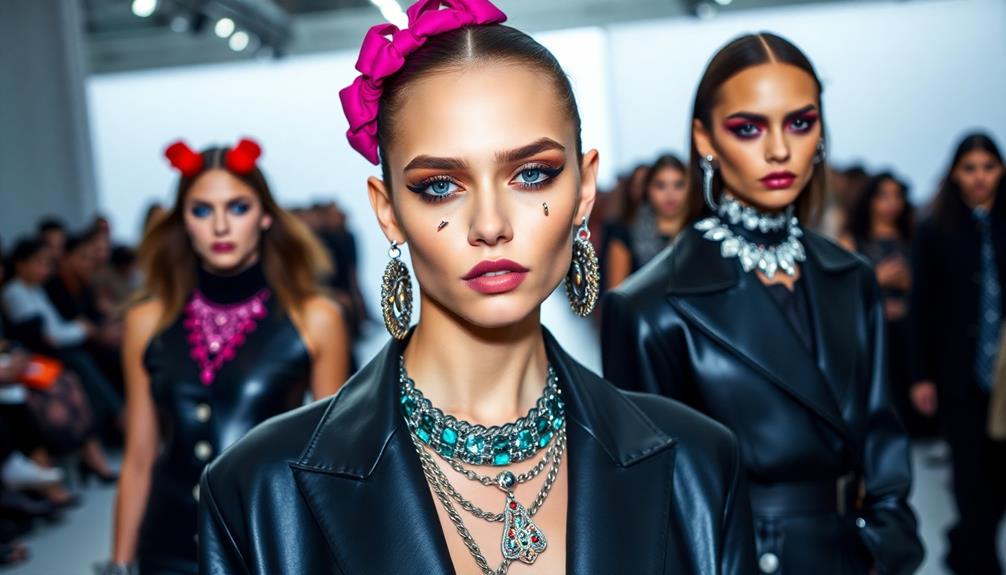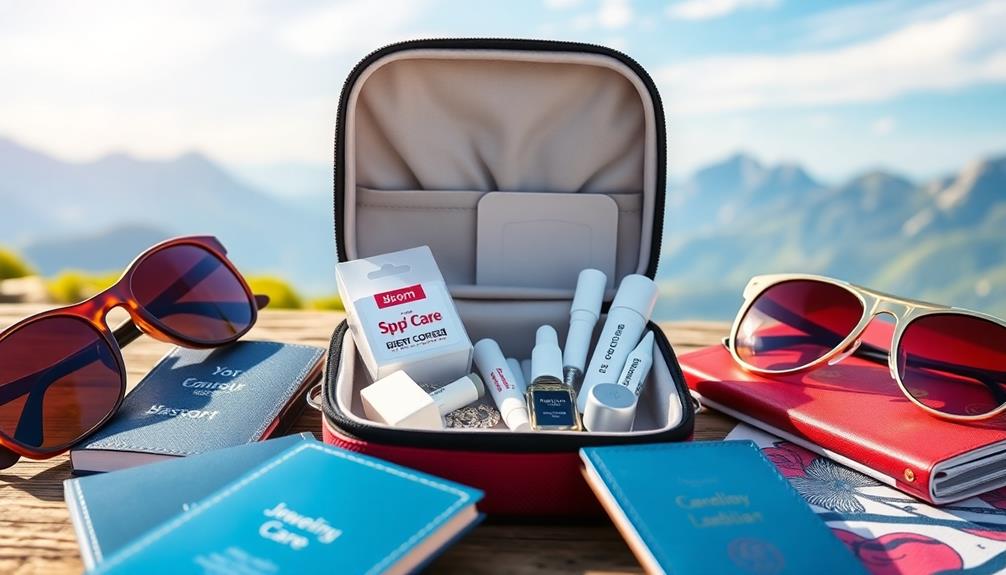Piercings are increasingly trending among makeup artists and hairstylists, reflecting a shift towards more inclusive beauty standards. While some artists face challenges in traditional settings due to visible piercings, many embrace body art as an essential form of personal expression. The evolving perception is reshaping how clients view beauty, with a growing acceptance of diverse styles. Artists are experimenting with various piercing trends, showcasing creativity and individuality through unique ear adornments. This community push for change promotes a more open-minded approach in the industry. If you want to uncover how this evolution impacts career opportunities, keep exploring further.
Key Takeaways
- Makeup artists often face biases against visible piercings, impacting their job opportunities and industry acceptance.
- The beauty industry is slowly shifting towards embracing diverse beauty standards, including the acceptance of piercings.
- Hair stylists tend to be more accepting of piercings compared to makeup artists, highlighting a divide in industry perceptions.
- Current trends favor creative and daring ear accessory styles, reflecting a growing acceptance of body art in beauty.
- Community support among artists is crucial for advocating inclusive practices and challenging traditional beauty norms related to piercings.
Industry Perception of Piercings
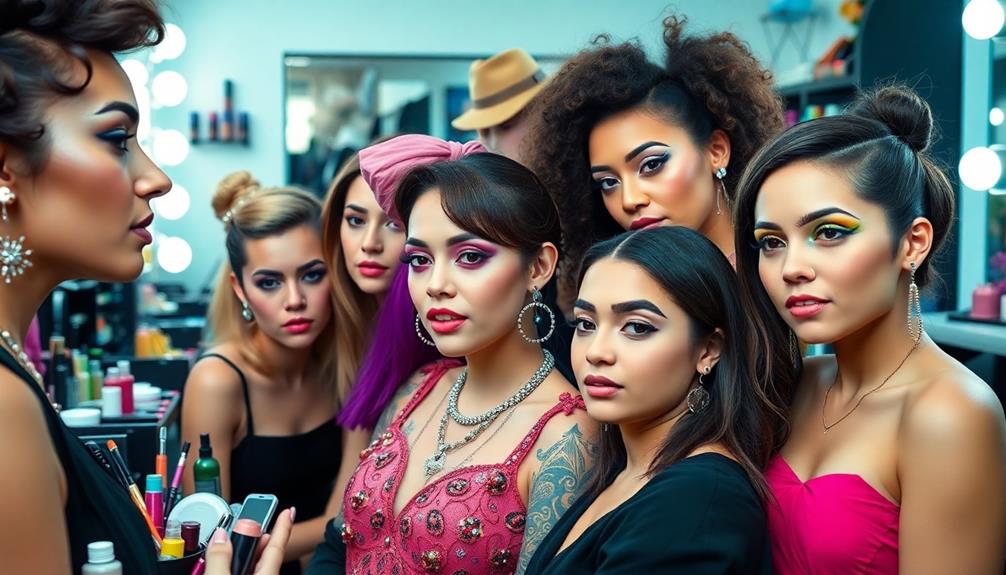
In the beauty industry, while many clients may not care about visible piercings, the perception of them can still create significant barriers for makeup artists. Unfortunately, facial piercings often lead to negative stereotypes and biases against MUAs. Many companies prioritize brand image over talent, rejecting candidates with visible piercings without providing clear reasoning behind their policies. This not only stifles creativity but also raises discrimination concerns, as skilled artists may find it difficult to secure jobs simply based on their appearance.
Unlike the hair industry, which tends to embrace body art more openly, the beauty therapy sector clings to conservative standards. While most clients might be indifferent to body art, high-income clients often hold traditional views that influence hiring decisions. This disconnect can leave talented MUAs struggling to find opportunities in a field that should celebrate diversity and individuality.
Ultimately, the perception of piercings in the beauty industry serves as a reminder of the need for change. By challenging these outdated views, both clients and employers can create a more inclusive environment that values skill over appearance, allowing all makeup artists to shine.
Cultural Significance and Acceptance
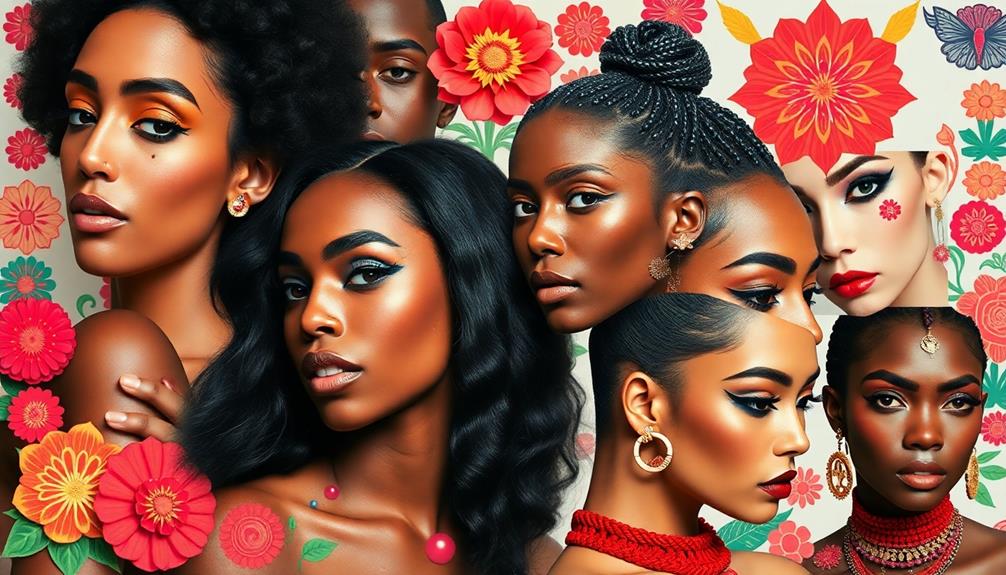
Piercings carry deep cultural significance across various societies, often representing beauty, tradition, and identity. For instance, nose piercings in Indian culture symbolize both beauty and cultural heritage. Tribal communities also embrace facial piercings as a vibrant expression of their cultural identity.
However, in the beauty industry, these piercings sometimes clash with conservative ideals, leading to negative perceptions among makeup artists.
To understand the cultural significance and acceptance of piercings, consider the following points:
- Nose piercings are celebrated as symbols of beauty in many cultures.
- Facial piercings reflect cultural identity in tribal communities, often seen as art.
- The beauty industry often views piercings as unprofessional, limiting acceptance.
- Community discussions highlight a need for broader acceptance of diverse forms of self-expression.
As you navigate the beauty industry, it's crucial to recognize that piercings tell stories of individuality and cultural heritage.
Embracing this diversity can foster a more inclusive understanding of beauty, allowing everyone to celebrate their unique identity without fear of judgment.
It's time for the beauty industry to evolve and appreciate the rich cultural significance that piercings bring.
Personal Expression Through Makeup
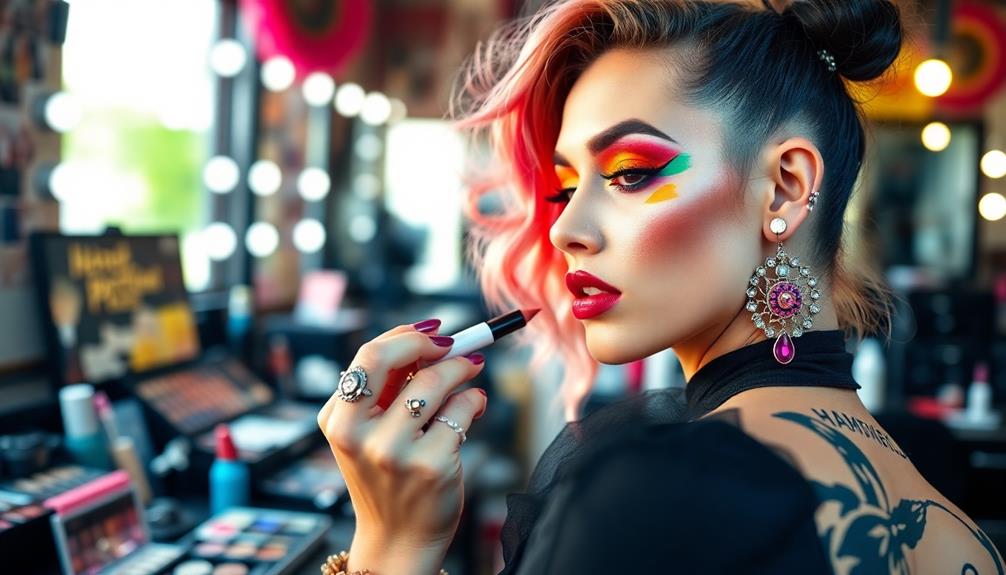
Makeup is your canvas for showcasing individuality, letting you express who you're through bold colors and unique techniques.
As beauty standards evolve, embracing diverse styles—including facial piercings—becomes a powerful statement about creativity and self-acceptance.
Incorporating elements like glamour makeup and hair styling ideas can beautifully complement your piercings and enhance your overall look.
You have the freedom to celebrate your uniqueness, whether you choose to accentuate your piercings or let your makeup speak for itself.
Individuality in Makeup Expression
Expressing your individuality through makeup can be a transformative experience, allowing you to showcase your unique style and personality. Makeup isn't just about enhancing your features; it's a canvas for self-expression.
By incorporating face piercings and bold makeup choices, you can create a look that truly reflects who you are. Additionally, utilizing high contrast and color accuracy in your makeup can enhance the visual impact of your overall look, much like how color accuracy impacts overall image quality in projectors.
Here are some ways to express your individuality through makeup:
- Color Choices: Experiment with vibrant hues or muted tones that resonate with your personality.
- Techniques: Try different application methods, like graphic eyeliner or intricate designs, to set yourself apart.
- Temporary Adornments: Use sticky stones or decorative makeup to add flair and enhance your overall look.
- Personalized Accessories: Pair your makeup with unique face piercings that align with your style, making a bold statement.
Embracing these elements not only showcases your individuality but also encourages others to celebrate their own beauty expressions.
As the beauty industry evolves, it's important to recognize that each choice you make is a form of artistic expression that contributes to a more diverse and inclusive environment.
Embracing Diverse Beauty Standards
In today's beauty landscape, embracing diverse beauty standards means celebrating all forms of self-expression, including the use of body art like piercings. As an artist, you know that makeup is a powerful medium for showcasing your unique identity. Just like your choice of colors and techniques, piercings enhance your personal style and reflect your creativity.
The growing acceptance of piercings in the beauty industry is reshaping how we view body art. Many makeup artists and hairstylists now incorporate piercings into their aesthetic, viewing them as valid forms of self-expression that complement their artistry. This shift invites more conversations about beauty standards, urging a broader acceptance of what it means to be beautiful.
Interestingly, temporary adornments like sticky stones are often embraced in professional settings, highlighting a contradiction in the perception of body art compared to traditional makeup. Engaging in community discussions, you and your fellow artists can advocate for a more inclusive approach, recognizing that piercings and other forms of body art deserve equal validation.
Challenges for Makeup Artists
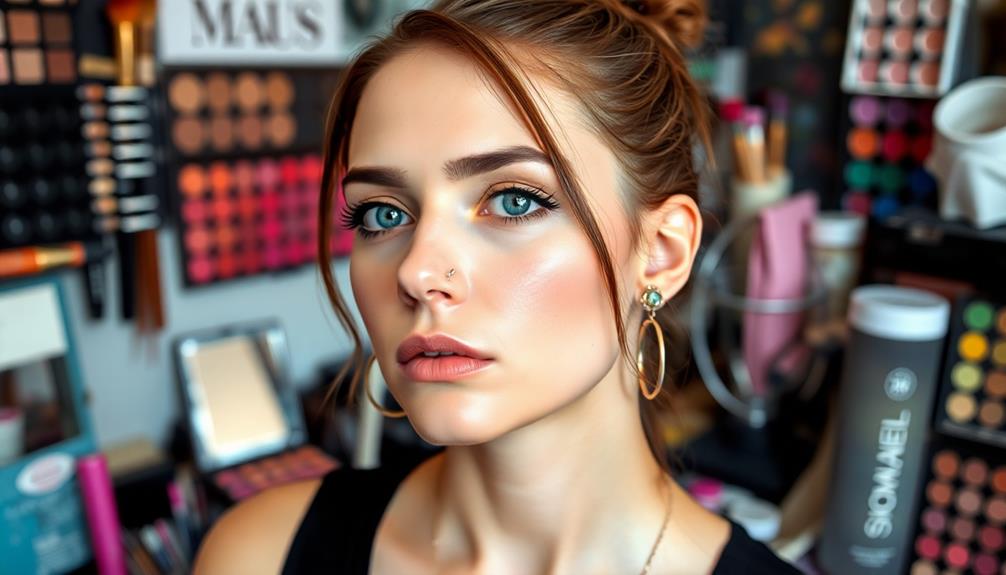
Maneuvering the beauty industry can be tough for artists, especially when it comes to facial piercings. You might find that various facial piercings, which reflect your individuality, can also lead to significant challenges for makeup artists like you.
Many employers still view piercings as unprofessional, which can hinder your job prospects.
Here are some common challenges you may encounter:
- Employment Biases: Many beauty brands have a stigma against facial piercings, making it harder for you to land a job.
- Covering Up: You might need to remove or cover your piercings during gigs to meet client expectations or brand image standards.
- Unclear Policies: A lack of clear guidelines from brands regarding piercings can create confusion, leaving you unsure about how to express yourself.
- Discrimination Concerns: Facing rejection based on your piercings raises important questions about fairness and inclusivity in the industry.
These barriers not only limit your opportunities but also highlight the industry's need for a more open-minded approach to personal expression.
Community Support and Feedback
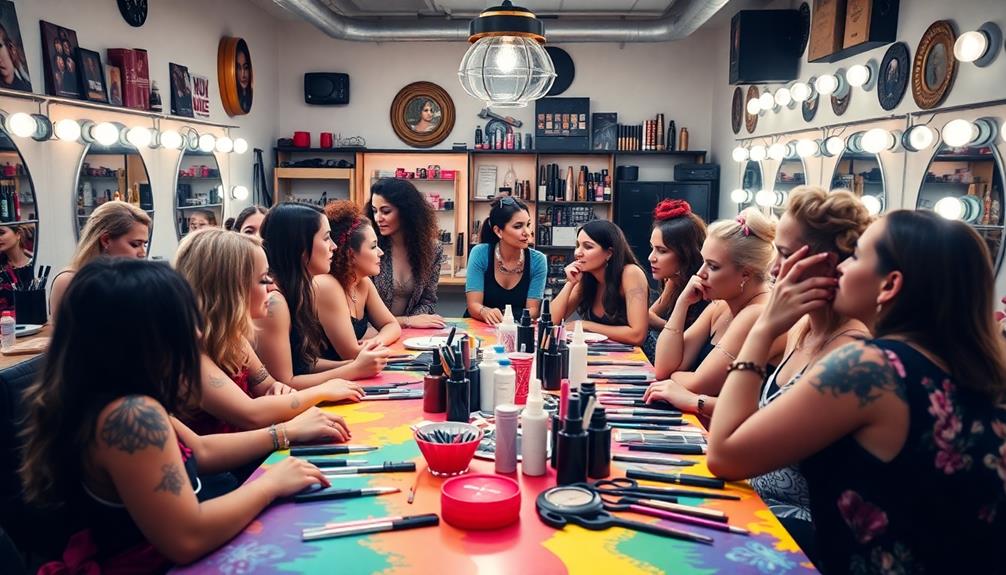
Facing these challenges, many makeup artists are finding strength in community support and feedback. You're not alone in feeling frustrated by the biases against facial piercings in the fashion world. Many of your peers are vocal about the need for more inclusive beauty standards that celebrate diverse expressions, including ear piercings.
This push for inclusivity reflects a broader understanding of personal identity and self-expression, much like the awareness needed to protect oneself in relationships with narcissists, where emotional manipulation can distort perceptions.
Narcissistic relationships can serve as a reminder of the importance of valuing one's individuality amidst external pressures.
Online forums have become a hub for constructive discussions, where MUAs share their experiences and opinions on body art. This dialogue fosters respect for individual choices and encourages self-expression, making it clear that personal style shouldn't hinder professional opportunities.
Community feedback highlights the cultural acceptance of piercings, contrasting sharply with the conservative views often held by beauty brands and employers.
As you connect with fellow artists, you'll likely notice a shared desire for industry change. Many MUAs are urging brands to align their policies with evolving societal norms regarding personal appearance.
Evolving Trends in Piercing Styles
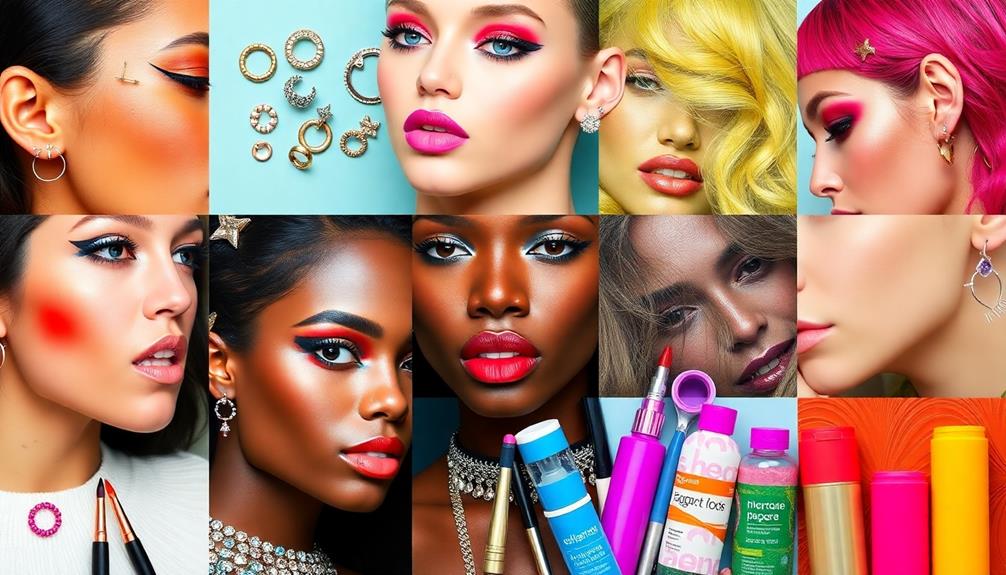
As trends in piercing styles evolve, you may find that the beauty industry is embracing a more daring and creative approach to ear accessories.
Today's styles cater to those who want to express their individuality and push boundaries with their piercings. AI-driven personalized learning paths in e-learning can inspire those in the beauty industry to explore unique piercing techniques.
You can expect to see:
- Chain-like earrings: These allow you to wear multiple earrings through different holes, creating unique looks that stand out.
- Chunky statement earrings: Industrial styles are in vogue, adding an edgy flair to both casual and formal outfits.
- The "more is more" aesthetic: This trend emphasizes multiple piercings and asymmetric styles, encouraging you to think piercings as an art form—be bold and personalize your ear accessorizing.
- Dangles and charms: Making a comeback, these add movement and playfulness, appealing to everyone who loves versatile styling.
Second lobe piercings offer a subtle way to enhance your look if you're hesitant about going all out.
With so many options, it's time to embrace your creativity and experiment with different styles. The piercing landscape is evolving, so let your personality shine through!
Frequently Asked Questions
Can Hairdressers Have Piercings?
Yes, hairdressers can have piercings. Many embrace them as a form of self-expression, attracting clients who appreciate individuality. However, some might choose to cover their piercings based on client preferences or salon policies.
Why Are Piercings so Popular Now?
Piercings are popular now because they let you express your individuality. As societal norms shift, more people embrace unique styles, inspired by influencers and the rise of self-expression, making piercings a trendy choice for many.
Are Piercings Still Unprofessional?
Yes, many still view piercings as unprofessional, influenced by stereotypes and traditional beliefs. However, attitudes are shifting, and you can find acceptance in creative fields that celebrate individuality and personal expression.
Are Piercings Becoming More Acceptable?
Isn't it ironic? You'd think piercings scream unprofessionalism, yet they're becoming more acceptable. As individuality and self-expression gain traction, you might find clients admiring rather than criticizing, shifting perceptions towards inclusivity and diversity in all fields.
Conclusion
In the beauty industry, piercings aren't just accessories; they're like the brushstrokes on an artist's canvas, each telling a unique story. As makeup artists and hairstylists embrace this trend, they find that piercings enhance personal expression and elevate their craft. Just as a splash of color can transform a dull painting, the right piercing can add a bold statement to any look. Embracing these evolving trends helps create a vibrant community that celebrates individuality and creativity.
Hi, my name is Danielle, and I’m an author for piercings-body.com. I have a passion for writing and love to share my knowledge on all things body piercing-related. I’m also a huge advocate for safe body modification practices and believe everyone should be able to make informed decisions about their bodies. When I’m not writing or blogging, I enjoy spending time with my family and friends, practicing yoga, and exploring new places.

